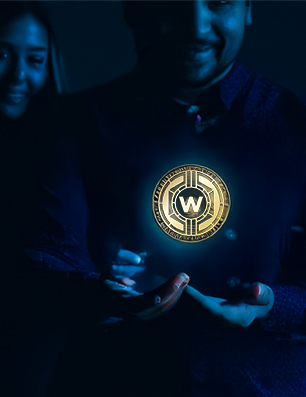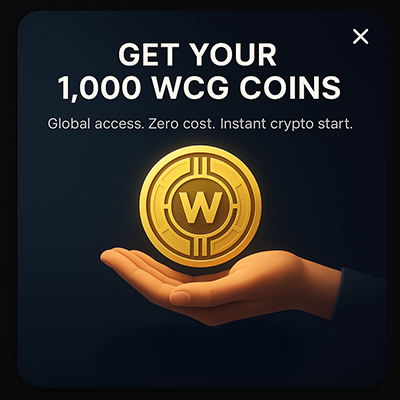- Written by: Daria Morgen
- Thu, 12 Aug 2021
- Czech Republic
Have you been trading crypto for a while now and want to upgrade your experience? Do you think you’re ready to take the next step and level up as a crypto trader? Well, meet crypto futures contracts! Futures trading is an advanced trading activity. If words like margin trading, shorting, and stop loss orders mean nothing to you, we suggest you read our beginner trading guides first. Click on the term you want to learn more about to see a […] The post How to Trade Bitcoin Futures appeared first on Cryptocurrency News & Trading Tips – Crypto Blog by Changelly.
How to Trade Bitcoin Futures
Have you been trading crypto for a while now and want to upgrade your experience? Do you think you’re ready to take the next step and level up as a crypto trader? Well, meet crypto futures contracts!
Futures trading is an advanced trading activity. If words like margin trading, shorting, and stop loss orders mean nothing to you, we suggest you read our beginner trading guides first. Click on the term you want to learn more about to see a relevant guide.
Futures Contracts: Essentials
Futures have always been an essential part of the trading world – after all, they have existed for hundreds of years. To put it simply, they’re a legal agreement to buy or sell a certain asset at a set price at a predetermined time in the future.
Here’s an example: imagine you own a flower shop, and one of your biggest sellers is tulip bouquets, most of which are supplied to you by your contact in the Netherlands. Lately, because of climate change and the abnormal weather conditions it causes, the supply of tulips has been dwindling – and you are afraid that their price will rise.
So, to safeguard yourself against a possible major future loss, you enter into a futures contract with your tulip supplier: one year from now, you will buy tulips from him at today’s market price. Of course, tulips can become cheaper instead – after all, nobody can predict what’s going to happen. You may still lose money – but there’s a big chance you’re going to make a profit instead.
Being able to predict future outcomes and knowing what risks to take (buying/selling at a predetermined price vs. at the future market price) is essential to knowing how to trade Bitcoin futures contracts successfully.
Please note that the contents of this article are not financial or investment advice. Do your own research before investing in any asset.
What Are Futures in Crypto?
Of course, futures contracts in both regular and crypto trading are slightly different from the one we’ve described in our tulip example. Although they’re also sometimes to hedge (limit) costs, futures in trading are usually aimed at earning profit via speculation on a future price of an asset.
The main thing you need to understand about crypto futures trading is that you don’t buy the cryptocurrency – you buy a contract.
That contract allows you to basically lock in a price of an asset, which in our case is Bitcoin, and benefit from its future price movements no matter what they are.
How Does Bitcoin Futures Trading Work?
Here are some things you need to know to understand how Bitcoin futures contracts work.
Entry point
Just as the name suggests, an entry point is how you begin (enter) a trade. There are two main ways to do it:
- Long (an agreement to buy an asset at X price on Y date)
- Short (an agreement to sell an asset at X price on Y date)
Long positions are considered to be against the market – you get profit when the underlying asset’s price goes up. Let’s say you buy a Bitcoin futures contract that states you will buy 1 BTC in one week for $30k. During that week, Bitcoin experiences a price surge and is now worth $40k instead – so you buy it for $30k as per your contract and then sell it for $40k, earning $10k profit. Please note that this is a very simplistic explanation – but it should give you an idea of why and when to open long positions on the Bitcoin futures market.
Short positions are, naturally, the complete opposite of long ones. You get profit when the underlying asset’s price goes down. You enter a futures contract to sell an asset at a high price specified in the contract for subsequent repurchase at a lower price.
Leverage
You can read an in-depth description of what leverage is here. In short, it allows you to open a futures BTC position at a fraction of a cost of an actual Bitcoin.
Margin
Margin is the amount of collateral you need to have on your account in order to actually trade Bitcoin futures. The higher the amount of the trade, the more money you will have to deposit to your trading account.
Expiration date
There are two types of Bitcoin futures contracts: perpetual ones and ones that have an expiration date. Once a futures contract reaches its expiration date, it gets settled, and the trader’s account either gets credited or debited depending on whether there’s a profit or loss.
Liquidation
Liquidation happens when the current market price of the underlying asset reaches the established liquidation price. Part of the trader’s margin collateral will be used to attempt to cover the loss, and if there’s a surplus left, it will be returned to the trader.
Settlement
Settlement is what the trader is given/has to give once a futures contract is settled. In most cases, cash settlement is used, meaning that no exchange of the underlying asset actually takes place.
Perpetual Futures Trading
A perpetual futures contract is one that doesn’t have an expiration date.
Where Can You Trade Bitcoin Futures?
Bitcoin futures can be traded on not only crypto exchanges but regular ones, too. Not all exchanges offer this feature, however, and some of them don’t allow crypto futures trading for residents of certain countries, so make sure to check the platform’s FAQ and Terms of Use to see whether you’re legally allowed to trade Bitcoin futures contracts on it or not.
Pros and Cons of Trading Bitcoin Futures
Futures trading is extremely risky even for relatively non-volatile assets, so, naturally, it is extremely extremely risky when it comes to crypto and Bitcoin. Despite this (or, in some cases, because of this), many users still choose to trade Bitcoin futures.
Pros
- The biggest benefit of trading Bitcoin futures comes from the age-old notion “the higher the risk, the higher the reward”;
- The high leverage on the Bitcoin futures market allows traders to have less initial capital to have big profits;
- The ability to benefit from a coin’s price movements without having to hold it, thus risking losing your keys, having your wallet hacked, and so on;
- Bitcoin futures contracts can also help to mitigate the risk of sudden price crashes and extreme price volatility;
- With Bitcoin futures contracts, you can bet against the market and benefit from both price decline and increase.
Cons
- The risk is extremely high both because of the nature of the crypto market and the high leverage;
- The crypto market is highly volatile, so opening long-term Bitcoin futures positions is extremely risky.
Do I Need a Digital Wallet or a Broker to Trade Bitcoin Futures?
You don’t need a crypto wallet to trade Bitcoin futures contracts if your cryptocurrency exchange or broker offers cash settlement since no actual Bitcoin is exchanged during the transaction. The only thing you need to start trading Bitcoin futures is to set up an account with a brokerage or an exchange. Please note, however, that most exchanges will require you to go through the KYC verification first.
Best Way to Trade Bitcoin Futures
You can trade Bitcoin futures contracts on either cryptocurrency exchanges or brokerages. Both have their pros and cons, but the biggest advantage of crypto exchanges is that they let you use other cryptocurrencies as a margin.
Ultimately it is up to you to choose what platform you want to trade Bitcoin futures on – just make sure it is reliable and secure. However, if you’re new to futures trading, we recommend you to use a beginner-friendly platform like Changelly PRO. That way, you will be able to focus on learning how to trade Bitcoin futures without having to get distracted by a complicated user interface or features you don’t need at the moment.
Tips for BTC Futures Trading
Firstly, here are some general trading tips. Although we’ve mentioned most of these tips in some of our previous articles, they bear repeating.
- Don’t let your emotions take control of you. Oftentimes people that have made a loss get fired up and attempt to get their money back by trading more: don’t do this. The angrier and/or more desperate you are, the worse the positions you enter will end up being.
- Trade with a clear head, and if you feel like you’re getting tired or frustrated, take a break – an hour, a day, or even a month, however long it takes for you to be in the right state of mind again.
- Money isn’t going anywhere. Lots of crypto traders share their successful trades online, and it can be hard to not be affected by FOMO in that atmosphere. Understand that you’re going at your own pace – and that you’ll get more profit even if you earn less money trading but lose less by not making risking emotional trades.
- Have a savings account/a rainy day fund that you absolutely cannot touch.
- Practice with small amounts first to get a feel for the market.
Now, here are some more Bitcoin futures trading-specific tips:
- Learn more about technical analysis, especially about support and resistance and how they are identified. Support is the point at which a price downtrend usually slows down and comes to a halt. Resistance is the opposite – it’s the point at which the price of an asset starts to meet pressure and cannot rise any further.
- If the market is booming and there’s a definite uptrend, you can put a long order once the price of an asset reaches its current support level.
- If the market is in a downtrend, you can enter a short position once the price of an asset approaches its resistance level.
FAQ
Can I trade crypto futures in the US?
Yes, you can trade Bitcoin futures in the US. However, you will need to find an exchange that works with US residents, as not all of them do.
In fact, the second-biggest bank in the US, Bank of America, has recently allowed select clients to trade Bitcoin futures. Although most crypto community members dislike banks, this is still amazing news – it is another step towards possible future mass adoption.
Can you day trade Bitcoin futures?
Day trading is an act of closing your position on the same day that you opened it. Yes, it is possible to day trade Bitcoin futures.
How do you trade futures?
- Open a trading account on a crypto exchange or get a brokerage account
- Verify your account
- Go to the Futures tab on your exchange
- Add margin
- Create a long or short position
The most important step, however, is to learn more about the asset you’re planning to trade and do research on it.
Good luck on your trading journey!
Disclaimer: Please note that the contents of this article are not financial advice. This article should not be considered as offering trading recommendations. The cryptocurrency market suffers from high volatility and occasional arbitrary movements. Any investor should research multiple viewpoints and be familiar with all local regulations before committing to an investment.
The post How to Trade Bitcoin Futures appeared first on Cryptocurrency News & Trading Tips – Crypto Blog by Changelly.






